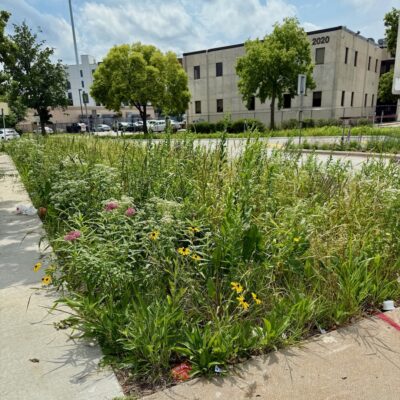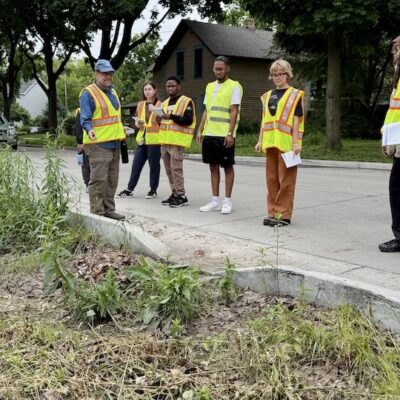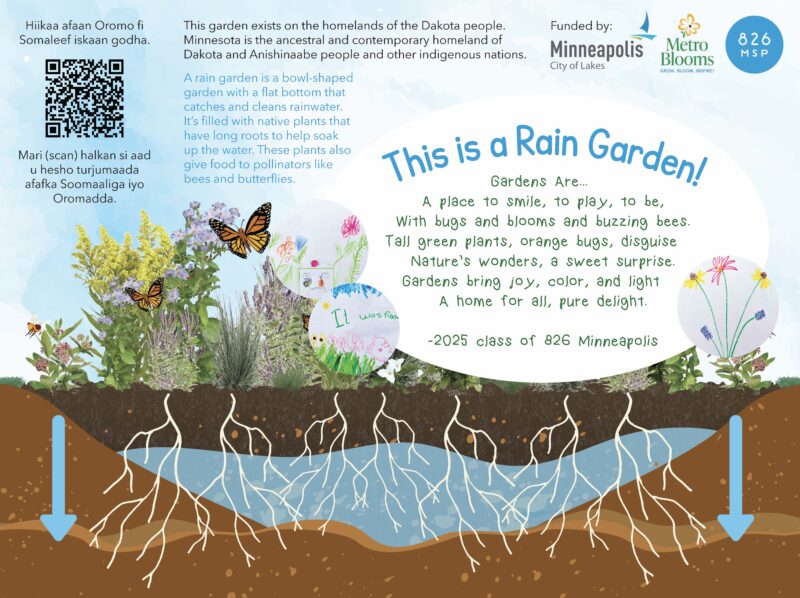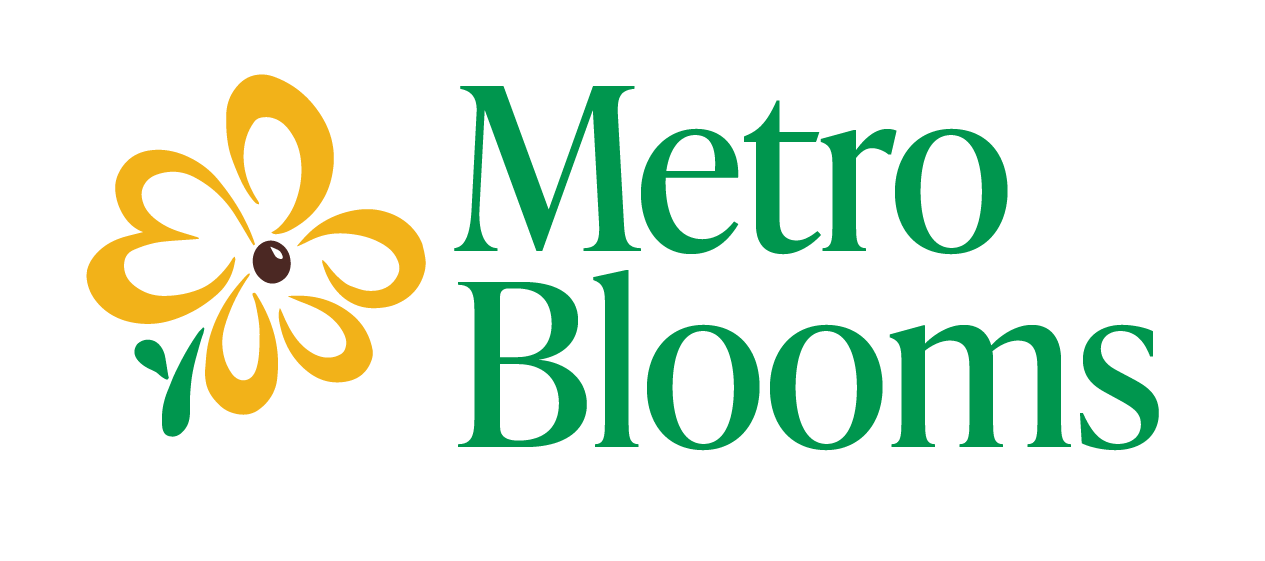
Rain Gardens in Seward: Research, Training, and Community
In the Seward neighborhood in Minneapolis, a cluster of boulevard rain gardens is doing more than soaking up stormwater. They are a living experiment in plant research, a training ground for young landcare workers, and even a canvas for student art.
Since last fall, Metro Blooms has been working under contract with the City of Minneapolis to plant and care for several boulevard rain gardens in the Minnehaha/Franklin Avenue corridor. The City wanted to test different approaches to planting rain gardens, with the project incorporating some community engagement.
Metro Blooms Design+Build planted the gardens, which had been installed the year before, in fall 2024. For project manager Ab Fleming, it became a fascinating research project. We tested three techniques: mulching and one-gallon container plants; seeding with plugs; and native sod (rolled-up like conventional sod, and maturing into native prairie). Using native sod was new for us.
When we returned in the spring, the sod sites stood out. They were thriving. “There’s so many species,” Ab said. “There’s so many things blooming. I’ve just been fantastically impressed by it.” The plugs held their own, establishing moderately well, while the seeded areas struggled against invasive species. Metro Blooms will maintain the gardens this summer and next year to continue learning about long-term establishment and upkeep.
Opportunities for Sustainable Landcare trainees

The project also connected with our Sustainable Landcare Training (SLC), a paid program teaching skills in maintaining rain gardens and other green infrastructure. The program recruits mostly BIPOC young adults from environmental justice communities in North and South Minneapolis.
Last fall, we hired some SLC graduates to help prep and plant the rain gardens. Ab said the work required different skills from the maintenance focus of SLC, but graduates were highly engaged. “It was really cool to work alongside each other,” they said.
A couple of last year’s crew have stayed on for work on the sites during the spring, picking up trash and removing weeds.
This year, we also brought our first cohort of SLC trainees out to the plantings to gain experience identifying different parts of a rain garden and learn what to look for during inspections and reporting—practical skills for future work in the field.
Community impact
City boulevards face challenging conditions: heavy foot traffic, salt exposure, pets, trash — even residents making their own changes. In one spot, someone removed most of the prairie sod, leaving some plants to create a flower garden. In another, someone mowed a strip through a garden to make a shortcut to the street. Ab, initially frustrated, realized it showed how community members use the space — very useful information.
Adaptation is part of the work. “It’s a little give-and-take with the project,” Ab said. “We’ve installed it a certain way. We’re still finding the rhythm of how it’s being interacted with by the community.”
Connecting youth and rain gardens

Last fall, the Metro Blooms Community Relations team door-knocked to let people know we would be planting the rain gardens. We connected with 826 MSP, an afterschool and summer writing program for BIPOC youth. This led to a follow-up visit with students this summer to share about rain gardens, pollinators and native plants.
“We walked over to a rain garden so they could see it for themselves,” said Manny Vazquez, a Community Relations team member. “We walked around it, really observing what was in it, the different kinds of flowers…”
The students drew pictures of what they saw and contributed words to create a poem about the experience. The poem will be displayed on a sign at one of the rain gardens, with Oromo and Somali translations. Passersby can pause to learn about the gardens, while students will see a tangible display of their creative efforts.
“They have some ownership over something in their community that they helped create,” Manny said.
Looking ahead
Hopefully, our three-year contract with the City will yield insights into the most effective planting methods for boulevard rain gardens. But these gardens are more than tools for managing stormwater; they are also places where relationships between people, plants, and place are taking shape.
Ab reflected on the differences between working in public spaces like these gardens and individual residential gardens (another area of Metro Blooms Design+Build’s work). In public spaces, there is less control over the space, and it can be disheartening to arrive and find plants pulled or mowed. But it also shows that community members are engaging.
“Residential gardens are cool, too, but they are privately owned,” Ab said during a walk among the gardens. “This is all of ours.”
— Aleli Balagtas, Metro Blooms Editor
This work was supported by the City of Minneapolis, the Mississippi Watershed Management Organization and the Minnesota Board of Water and Soil Resources. Thank you, 826 MSP, for your collaboration!
